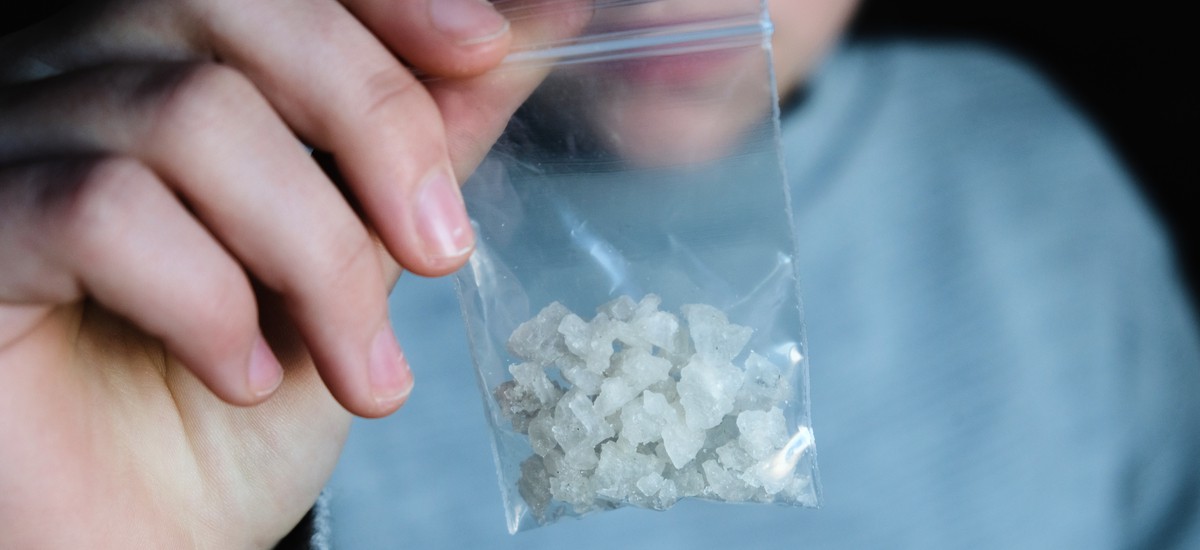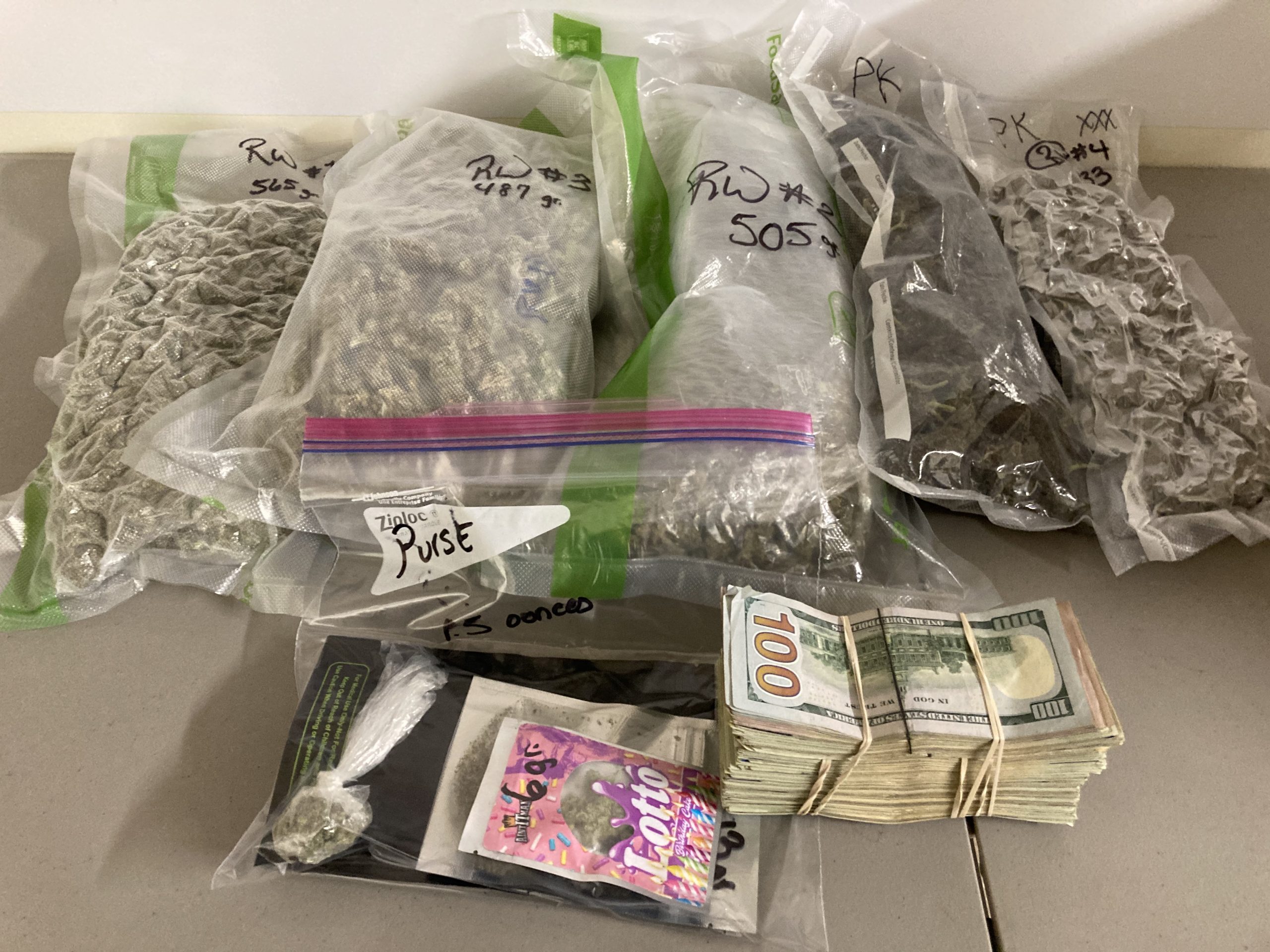In the spring of 1999 a couple of my Task Force officers, along with myself, were sitting in our office writing reports and discussing several cases that we had just made. Suddenly our supervisor walked in and said “Boys I think we have a meth lab around here somewhere”. Wow, did we give him the once over. We called him everything but a crazy man. We were very familiar with methamphetamine but the concept of a meth lab went completely over our heads. Even with over two years of experience in drug enforcement under our belts nothing in our past investigations indicated that a meth lab was operating in our area. The supervisor explained his case to us and said there had been a theft of anhydrous ammonia at a local Co-Op and there was only one reason to be stealing that stuff. We still were not convinced and quickly blew everything he had just said to us off.
A few weeks later I purchased a small amount of meth from a relatively small time female dealer. As I examined the recent purchase back at our office I began to notice that something didn’t look quite right with this dope. It was whiter in color than what we had been buying in the past and it had a funny smell coming from it, sort of like gasoline but not. My first conclusion was that I had just been ripped off and sold bunk (fake drugs) by this fine outstanding young lady. As per our standard operating procedure I conducted a field test on the stuff and what do you know it popped positive for methamphetamine. Happy with the results of this little investigation I tagged the dope as evidence and went about my business.
About a week later the informant who introduced me to my female meth dealer fell down a flight of stairs and died. So I started writing out arrest warrant applications on the people who he had introduced me to and I had made cases on. Everything that involved him was a hand-to-hand drug deal with me so the arrest warrant for the female was approved and signed by the judge. As we started arresting people my female dealer began to suspect that this guy she had sold her meth to was a cop. She went underground on us and we ended up looking for her for a couple of weeks. Finally and as usual we got a tip where she and her boyfriend was hiding. They were hung up in a trailer in a remote area of the county. We gathered the troops and headed out to serve the arrest warrant.
Our approach was the usual and nothing fancy. We went to the trailer and made contact with her boyfriend who was outside working on a car. She obviously saw us from inside and was going to make absolutely no attempt to make this arrest easy; she went barricade on us and refused to come out. To make a long story short, in the process of getting into the trailer and arresting her we discovered an operational meth lab in the trailer and on the property.
We thought we had found the goose that laid the golden egg here. We had several reasons for being excited about this discovery. First, our supervisor was right there was a meth lab operating in our area and we had found it in a reasonably short amount of time. Second, our thinking was, here we have a facility capable of producing a constant amount of methamphetamine and we had just shut it down. At the time we had no idea what we were going to be dealing with from that point on. The meth plague had worked it way to our little corner of the world and the labs were going to feed us a steady if not overwhelming dose of it from this point on.
What the average citizen needs to realize is that we now have an entire sub-culture that is operating within our communities. The meth culture has a life of its own and it is quickly bringing more and more people into its fold. Ten years ago we may all thought of somebody involved with meth as a longhaired rough looking biker type. At one time in the simplest and narrowest of views this may have had some truth to it. Outlaw motorcycle clubs (or gangs, whatever you want to call them) controlled the manufacturing and distribution of meth, as well as being a major consumer of their own product. They still do control a great deal of the stuff now, but they are no longer the only source. Now, with the advent of the meth lab, anybody can be “the man”. The meth culture relies on supply and demand and everything within falls in its dysfunctional place.
People involved in the meth culture live in a world much smaller than the one the rest of us are used to. Meth becomes the sole important thing in their lives and everything else becomes secondary, including their children. This downward pattern is progressive. There is no time line for it, but none-the-less it is practically guaranteed. They will discontinue prior friendships, they disassociate themselves from family and the rest of society is useless to them, unless as a victim. Whatever job they had becomes a nuisance. After a period of time they just become null and void of the whole work thing and quit or are fired. They often continue to seek employment for a period of time seeking non-skilled employment and often bounce from place to place in the workforce. Until finally they figure out they can manufacture and / or sell the drug in an attempt to earn money. At first this seems like the perfect job and it keeps them around the stuff they love the most — methamphetamine.
Soon every waking action involves meth. They will only associate with others also involved in the meth culture. There are several reasons for this. The first being that the only interest they have is the drug and those who can get it for them. The second, in the paranoid world of this culture anyone and everyone can be or is a cop or someone working for us. The third, is possible shame from the people they new before the downward spiral of addiction. The forth is, and I will probably bring this up again, they simply do not care anymore. Anything that gets between them and meth is simply an obstacle that must be driven right through. This is where we get into officer and public safety issues.
The reasons a person starts using meth can vary, but there are a few that stand out. The first is recreational / social use. This can be simply explained as “partying.” Another is the old stand by – peer pressure. You will also find a number of people, usually females” that state that they started using meth as a weight loss supplemental. They hear various types informational tid-bits on the street that meth suppresses the appetite and quite honestly, it does. People do lose weight with meth; the problem is that they lose everything else, literally.
For whatever reason people think that meth is less dangerous than cocaine and sometimes they give that as the reason why they started using the drug. I am constantly asked at seminars and when talking with the public on why meth is so popular. I think some people are disappointed with my answer. They expect some long drawn out explanation involving sociology, economics, psychology and law enforcement “speak.” What they get is a very simple answer – it feels good. When you get right down to it all illicit drugs do that. If they made us feel bad nobody would use them. A perfect example is when you ask someone arrested for meth if they ever tried drugs like cocaine, heroin or LSD you could very well get answers like, “I tried that (or those) but I didn’t like the way it (or they) made me feel.” Hence the use was one time only and never evolved into an addiction. A cocaine addict may say the exact same thing about meth. There is no test or equation that we can give someone to see what drug they may rotate towards. And don’t forget that there are always those out there that are involved with dual or poly drug use and addiction. This means that they use various types of drugs and maybe even addicted to each separate substance.
I am also asked just what does meth feel like? My answer is again non-extravagant. I give them what I call the “Big Three”: euphoria, intense increase of energy and a marked increase of self-confidence. As a law enforcement officer interviewing people under the influence of meth can be frustrating to say the least. They cannot concentrate on what the situation around them is. It sometimes appears that they do not grasp what their situation is. They cannot hold still. If you have ever talked with someone who is constantly in motion in one way or another you can get a little flustered. Trying to talk with someone who cannot concentrate or sit down can be a challenge. Self-confident people tend to be a little arrogant, even if the confidence is artificial. When you add they factors with the possibility of meth rage and sudden turn around mood swings, the interview can become dangerous, even when in a controlled environment of a jail or police department interview room. It is always a smart practice to keep at least two officers involved in the interview process, even if one just sits there with their mouth shut. This also transfers over to people confronting a friend or family member about their suspected meth use. Having said all this it is important to remember that unless the suspect is in some type of meth related psychosis they do know what they are saying and can maintain a relevant conversation when you cut through all the baggage.
Here is the bad news. The dual drug use seems be most prevalent in the younger crowd. This is especially true or the ravers. They will mix MDMA (ecstasy) with LSD, ketamine with GHB, MDMA with nitrous oxide and so on. However, we are also seeing meth creep into the raver scene. Some if not most ravers will say that meth is looked down upon as a “thug drug”, especially in the early years of the rave culture. But this drug will not be denied or shunned. Meth was looked upon as a dirty and corrosive drug used by bikers and the rougher crowd. But, the bottom line is that if people are using designer or trendy drugs in a habitual manner meth is more than likely going to pop up on the radar.
Methamphetamine just doesn’t creep into a community or geographical area – it attacks it. Those involved in its culture are its soldiers, whether they are voluntarily involved through distribution or a hapless user at its mercy – it doesn’t really matter. Community leaders must realize that if they do not fight back with furor they must be ready to accept the fact that they are going to lose a specific percentage of their population. Whether the loss is through criminal activity, drug related activity / death or victimization from criminal activity the loss will be significant. Parents must also realize that their children are potential targets for meth and the people involved with it. Quite frankly, the world is a lesser place with this stuff in our midst. The battleground is our homes, streets, alleys, workplaces, backyards and even parks.
To combat this drug we first must realize what it is, what it does and what it is capable of doing. Like any other enemy we need to know everything about whom, or in this case, what we are fighting. From what I have seen this is going to be a long, drawn out, house-to-house battle. And one we better to be prepared to fight. A few years ago an informant said something to me that caught my attention. They said, “You know Greg in ten years a majority of this cities population is going to walking around here like zombies. And I am not sure there is anything that you guys can do about it”. I am paraphrasing here but you get the point.
I think when meth first started showing up as a recreational drug, experts in the addiction field and maybe even some in law enforcement was hoping that it would run its course and go basically away. It goes to show us that we really didn’t know how potent this stuff is and how quickly that our population was willing to sell, try, use and become addicted to it.
The havoc meth plays on the body ranges from short to long term. We can break meth abuser characteristics into three different categories: physical, mental and social. The physical characteristics are extensive. Noticeable weight loss is probably the most prominent. Being a central nervous system stimulant meth is a natural appetite suppressant. This is a fairly well known fact and can be a so-called alternative reason to start using the drug, as opposed to recreational use. Doctors in the 1950’s often prescribed amphetamine type drugs to women who wanted to loose weight and be the perfect looking housewife. They were no more immune to the side effects of these drugs than anyone else and addiction was just right around the corner. As well as the appetite suppressant qualities the stimulant qualities working on the body also contributes to weight lose. The body and brain are going one thousand miles per hour, so to speak, and the body burns up calories, fat and later on muscle (when the others are gone). Having an acidic structure meth also just plain eats away body tissue as it is passed through the internal body parts. There are countless pictures out there of before and after pictures (usually mug shots) that show a person rapidly deteriorating.
Teeth grinding is a pleasant little side effect. Again, as a stimulant everything in the body tenses up, including the jaw muscle. With the acute energy burst nothing can just sit still. Meth addicts can often be seen grinding their teeth in a manner that would make most of us uncomfortable to say the least. It is even hard to watch sometimes. You may also note abscesses on the meth users body. Superficial cuts and scrapes that could be handled with minor first aid are not often taken care of. Compounded with poor hygiene practices the resulting is an aggravation of the wound. Another skin problem associated with meth is common acne. Meth stimulates everything including oil- producing pours. Again, when you add poor hygiene practices acne is a common result.
Dry mouth is also very common. Cracked lips, dry irritated dry gums and sore scratchy throats are also a physical effect of meth use. We often find significant amounts of throat lozenges at the scene of meth raids and arrests. “Meth bugs”, whose scientific name is formication, is a classic symptom of meth abuse. A mental side effect of abuse is the feeling that bugs are crawling underneath the skin, a sort of physical hallucination if you will. The user will start picking and scratching at these bugs to the point where they will cause sores on their body (usually the face and hands). They will continue to pick and pick and pick, often without even knowing they are doing it. The sores that this produces are called meth bugs. Right along side the meth bugs is the constant itching that many users will exhibit. With its stimulant qualities meth has even the tiniest of nerve cells at the skins surface agitated. The agitation causes an itching sensation that must be scratched. This voluntary, or even un-voluntary reaction of scratching can lead to the abscesses that I wrote about earlier. These should not be confused with the meth bugs, which is the actual ideation and reaction of bugs being under the skin.










